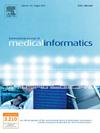大型语言模型在眼科急诊中的应用
IF 3.7
2区 医学
Q2 COMPUTER SCIENCE, INFORMATION SYSTEMS
International Journal of Medical Informatics
Pub Date : 2025-03-22
DOI:10.1016/j.ijmedinf.2025.105886
引用次数: 0
摘要
大型语言模型(llm)在各种医学应用中显示出前景,但它们作为急诊眼科决策支持工具的潜力仍未通过实际案例进行评估。目的:与人类专家相比,我们评估了最先进的LLMs (GPT-4、gpt - 40和Llama-3-70b)作为急诊眼科决策支持工具的性能。方法在这项前瞻性比较研究中,将法学硕士生成的诊断和治疗方案与来自斯普利特大学医院的73例匿名急诊病例的认证眼科医生确定的诊断和治疗方案进行评估。两位独立的眼科专家使用4分李克特量表对LLM和人工生成的报告进行评分。结果人类专家的平均得分为3.72分(SD = 0.50), GPT-4得分为3.52分(SD = 0.64), Llama-3-70b得分为3.48分(SD = 0.48)。gpt - 40表现较差,为3.20 (SD = 0.81)。人类和LLM报告之间存在显著差异(P <;0.001),特别是在人类得分和gpt - 40之间。GPT-4和lama-3-70b的表现与眼科医生相当,差异无统计学意义。结论:大型语言模型作为急诊眼科的决策支持工具具有准确性,其性能可与人类专家相媲美,具有整合到临床实践中的潜力。本文章由计算机程序翻译,如有差异,请以英文原文为准。
Using large language models as decision support tools in emergency ophthalmology
Background
Large language models (LLMs) have shown promise in various medical applications, but their potential as decision support tools in emergency ophthalmology remains unevaluated using real-world cases.
Objectives
We assessed the performance of state-of-the-art LLMs (GPT-4, GPT-4o, and Llama-3-70b) as decision support tools in emergency ophthalmology compared to human experts.
Methods
In this prospective comparative study, LLM-generated diagnoses and treatment plans were evaluated against those determined by certified ophthalmologists using 73 anonymized emergency cases from the University Hospital of Split. Two independent expert ophthalmologists graded both LLM and human-generated reports using a 4-point Likert scale.
Results
Human experts achieved a mean score of 3.72 (SD = 0.50), while GPT-4 scored 3.52 (SD = 0.64) and Llama-3-70b scored 3.48 (SD = 0.48). GPT-4o had lower performance with 3.20 (SD = 0.81). Significant differences were found between human and LLM reports (P < 0.001), specifically between human scores and GPT-4o. GPT-4 and Llama-3-70b showed performance comparable to ophthalmologists, with no statistically significant differences.
Conclusion
Large language models demonstrated accuracy as decision support tools in emergency ophthalmology, with performance comparable to human experts, suggesting potential for integration into clinical practice.
求助全文
通过发布文献求助,成功后即可免费获取论文全文。
去求助
来源期刊

International Journal of Medical Informatics
医学-计算机:信息系统
CiteScore
8.90
自引率
4.10%
发文量
217
审稿时长
42 days
期刊介绍:
International Journal of Medical Informatics provides an international medium for dissemination of original results and interpretative reviews concerning the field of medical informatics. The Journal emphasizes the evaluation of systems in healthcare settings.
The scope of journal covers:
Information systems, including national or international registration systems, hospital information systems, departmental and/or physician''s office systems, document handling systems, electronic medical record systems, standardization, systems integration etc.;
Computer-aided medical decision support systems using heuristic, algorithmic and/or statistical methods as exemplified in decision theory, protocol development, artificial intelligence, etc.
Educational computer based programs pertaining to medical informatics or medicine in general;
Organizational, economic, social, clinical impact, ethical and cost-benefit aspects of IT applications in health care.
 求助内容:
求助内容: 应助结果提醒方式:
应助结果提醒方式:


